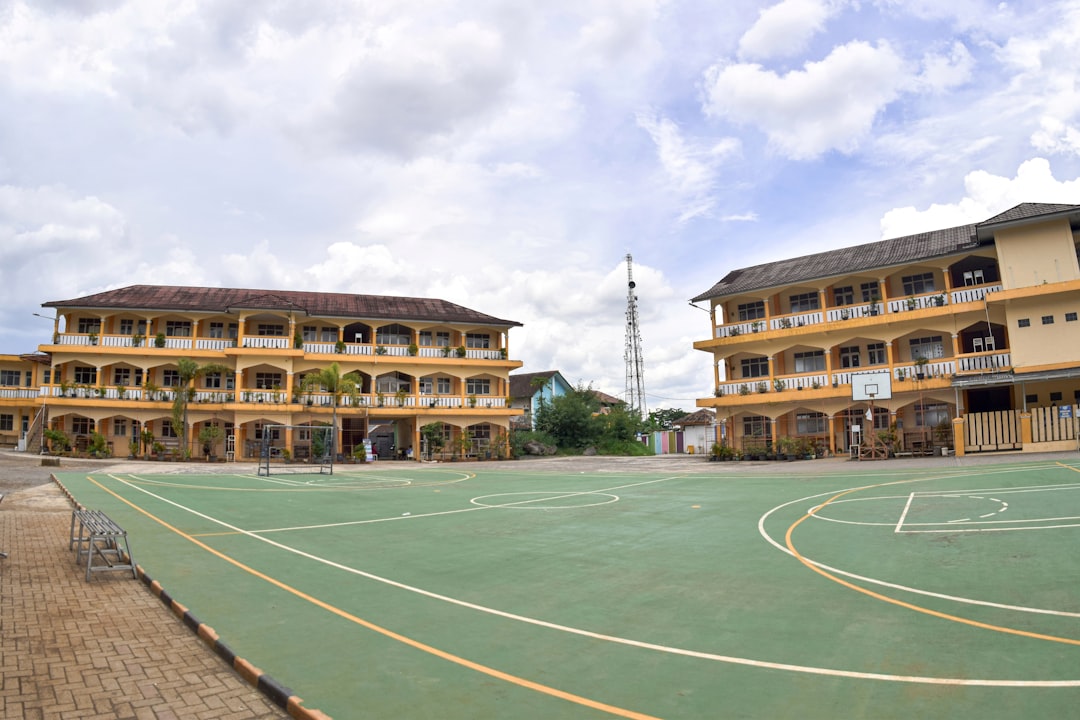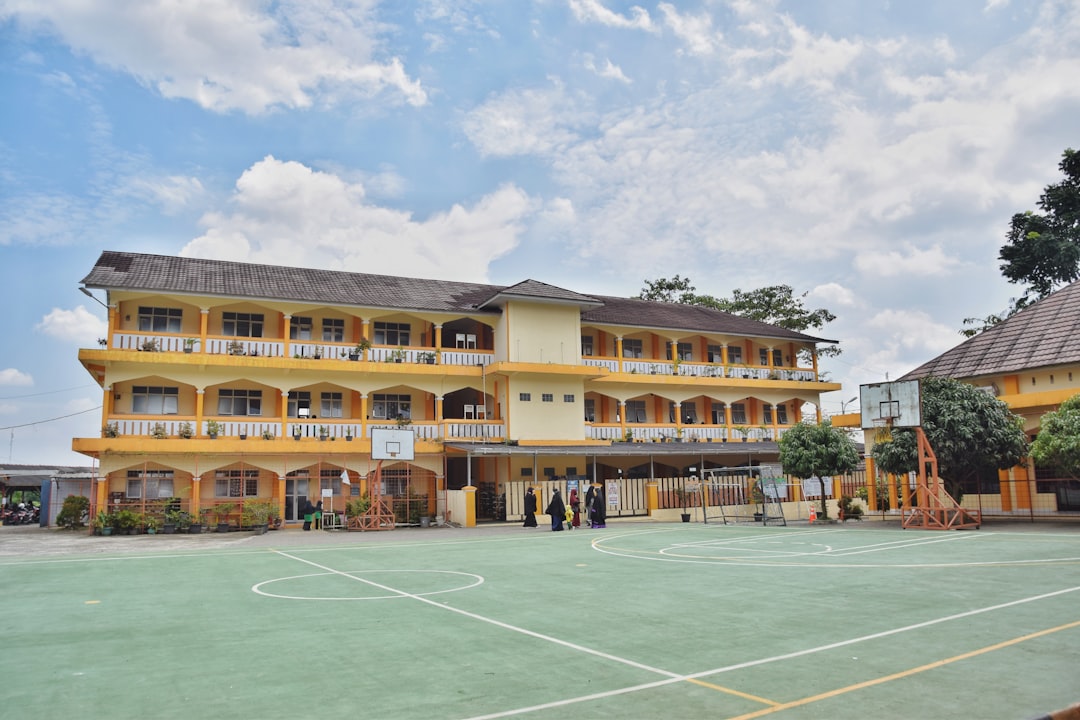

Engage prospects with a scan and streamline customer engagement with FREE QR code marketing tools by Sona – no strings attached!
Create a Free QR CodeFree consultation

No commitment

Engage prospects with a scan and streamline customer engagement with FREE QR code marketing tools by Sona – no strings attached!
Create a Free QR CodeFree consultation

No commitment
Secondary schools are under growing pressure to modernize how they collect feedback and engage students, all without overburdening staff with extra administration. Outdated methods such as paper surveys, physical suggestion boxes, or cumbersome in-person sessions often result in slow, incomplete feedback and low participation. These manual processes can tie up valuable staff time and make it difficult to accurately track responses or draw meaningful insights promptly, causing missed opportunities to adjust teaching or nurture student engagement when it matters most.
Today’s families and students expect easy, digital-first interaction with their schools. Yet, without the right tools, valuable input from students or parents may never make it into the feedback loop, and school leaders lose out on early warning signals or trends that could shape improved programs. QR codes have emerged as a bridge between in-person learning spaces and responsive digital surveys, offering students and parents instant, accessible ways to share feedback without the hurdles of app downloads or account logins, as outlined in Sona QR’s education guide.
By incorporating QR technology throughout the school, from classroom posters to event handouts, educators unlock streamlined feedback collection that enhances engagement and generates real-time data for refining curriculum and resources. This guide explores how QR codes enable secondary schools to gather richer, more timely insights while ensuring that no valuable perspective goes unnoticed amidst the daily flow of activity and information.

In many secondary schools, an ongoing challenge is missing out on high-value feedback because analog forms and paper surveys do not reach every voice, and lost or incomplete entries mean critical perspectives are never tracked for follow-up. QR codes now allow educators to replace these static methods with dynamic, digital forms via Google Forms QR codes, accessible from any student or faculty device, dramatically increasing participation among otherwise underrepresented groups.
To turn QR codes into a dependable feedback engine, align deployment with clear outcomes and measurable benchmarks. Begin by identifying the most important decisions you want feedback to inform, such as improving lesson delivery, refining extracurricular programs, or addressing campus climate. Then set targets for participation, turnaround time, and representation by grade level or subgroup, so you can track progress and adapt. For proven measurement approaches, see trackable marketing.
Compared to legacy approaches that rely on manual entry or delayed compilation, QR code systems help schools catch valuable responses as they happen. Modern feedback tools can also automate aggregation, flag sentiment shifts, and alert teams to spikes in engagement, enabling intervention in near real time rather than reactive follow-up after issues have escalated.

Schools often struggle with low visibility into who is engaging or why so many voices are absent from feedback reports. This lack of transparency can mean important issues go unnoticed, and high-intent respondents may never be recognized. For a framework on interpreting intent, see Sona’s blog post Essential Guide to Intent Data. QR codes reduce friction and expand access. Students and parents can scan a code located at the exact moment of relevance, such as after a lesson or during an event, then respond immediately without needing to install an app or create an account.
Dynamic QR codes offer additional flexibility and resilience. As the needs of a class or event change, schools can update the linked surveys or resources without reprinting posters or handouts, ensuring every scan connects to a current and relevant prompt. Because scan activity can be tracked, leaders can see which locations, times, or groups are underrepresented and adjust outreach accordingly. This makes feedback more inclusive and helps administrators direct attention where it is needed most.
For resource-constrained teams, QR campaigns scale efficiently. Instead of coordinating multiple paper forms and collection points, a single dashboard can manage destinations, monitor performance, and standardize reporting. Combined with automated reminders or tailored follow-up messages, QR-based feedback reduces administrative burden and increases the quality and timeliness of insights for decision-making.
Traditional feedback campaigns often miss key groups because not every student or parent responds the same way. QR codes support multiple formats, which allows schools to offer several pathways to participate while simplifying the experience for each audience. The most useful formats for feedback and engagement include:
Dynamic web link QR codes are especially powerful for secondary schools because destinations can be updated as priorities shift during the term. For example, a QR on classroom signage can point to a weekly lesson feedback form one week and a learning resource request the next, while preserving the same physical code. This reduces printing costs and keeps calls to action timely and relevant.

Capturing the full breadth of feedback requires meeting students and parents where they already are. Broad deployment of QR codes brings feedback prompts to high-traffic and high-impact locations, ensuring that quick input is always just a scan away. Think of the school environment as a network of offline-to-online gateways where context drives response rates and data quality.
Start with the highest footfall areas and moments of peak attention. Classroom transitions, assemblies, sports fixtures, parent-teacher meetings, and cafeteria lines are all places where short windows exist to capture honest impressions. Treat each placement as a micro-campaign, with a specific question, timeframe, and follow-up plan, rather than a generic always-on survey. From classroom posters to event signage, align the prompt with the moment.
By diversifying touchpoints, schools reduce the risk of missing out on crucial feedback from groups who may never attend an official session or fill out a traditional survey. Over time, location-level insights reveal where engagement is strongest and where additional encouragement or alternative channels are necessary.

Common pain points like late feedback collection or one-size-fits-all surveys can blunt the impact of engagement initiatives. QR code use cases make feedback feel timely, personalized, and relevant because they appear at moments of experience and use language that reflects the environment. For faculty activation ideas, try teacher QR strategies.
Focus on three core use cases that map to the school day and family engagement. Each use case should include a clear reason to scan, a promise about time required, and an assurance that responses will be reviewed and acted upon, which builds trust and increases participation over time.
These examples show that when barriers are removed, feedback becomes more representative and actionable. Iterating quickly on what you learn fosters a responsive culture, where students and families see concrete changes and are more willing to participate in future cycles.
One recurring frustration is the inability to distinguish between high-engagement and passive audiences, which leads to broad, unfocused outreach. Each QR scan is a useful signal. By deploying unique codes for different groups and contexts, administrators can build segmented audiences and tailor communications that fit the moment and the person.
Attribution does not need to be complicated. Create a simple structure by grade level, subject area, event type, and stakeholder group. Over time, patterns emerge that help leaders prioritize attention and resources. Students who consistently scan and offer rich input might be invited to student voice councils, while less responsive groups can be offered alternative feedback formats or in-person prompts.
With basic segmentation in place, schools can avoid generic messaging and instead offer targeted prompts, incentives, or acknowledgments that reflect actual behavior and interests.
Disconnected communication campaigns create inconsistent messaging, confused stakeholders, and missed chances to reinforce engagement. QR codes act as connective tissue. They link print and in-person touchpoints to live digital experiences, making every poster, handout, and announcement measurable and actionable. For follow-up tactics, see Sona’s Playbook Intent-Driven Retargeting.
Plan your QR strategy as part of a unified communication calendar. When you push an update on social media or via the school app, echo it through physical spaces with QR codes that drive to the same information or surveys. Conversely, when a campaign launches on campus, amplify it through email or SMS with short links that reach families who are offsite.
A coordinated approach ensures consistent messaging, reduces redundant effort, and turns everyday moments into opportunities to capture and respond to community sentiment.
Launching a QR-driven feedback initiative is simpler and more effective when everyone follows the same blueprint. A shared checklist keeps teams aligned on goals, roles, and timelines, while also building capacity for continuous improvement with each cycle.
Use the following steps to plan, deploy, and optimize your campaigns. Adapt them to your school’s size, schedule, and technology stack, and document what works so that others can replicate your results.
Define the specific outcome you want to achieve, then craft a clear prompt. Align the use case with a tangible decision you plan to make, such as adjusting lesson pacing, improving event logistics, or prioritizing student services. The more focused the ask, the higher the completion rate and the better the quality of responses.
Select static or dynamic based on your need for flexibility and tracking. Static codes are fine for fixed destinations such as a long-term resource page. Dynamic codes are best for trackable campaigns and content that might change.
Make the code scannable at a glance. Design with contrast, whitespace, and short URLs. Add a clear call to action with a time estimate and a reason to scan. Then test with students, staff, and parents under real conditions.
Place codes where your audience already pauses and make scanning effortless. Match the prompt to the environment so it feels natural and timely.
Monitor performance and close the loop. Use a platform that captures scan meta-data and integrates with your communication tools. Then iterate based on what you learn.

A persistent pain for many schools is that engagement signals get stuck at the point of collection. Knowing that a code was scanned is useful, but the real value appears when you connect scans to responses, tie them to specific contexts, and translate patterns into decisions. Robust tracking helps you identify the classes that need pacing adjustments, the events that require logistical changes, or the grade levels that are underrepresented. For tying offline scans to outcomes, see Sona’s blog post Essential Guide to Offline Attribution.
Start with core metrics. For awareness, monitor scan volume by location and time. For quality, track survey completion rates and average response length. For inclusivity, measure representation by grade and language. For responsiveness, calculate the average time from scan to response and from response to action. Over time, set benchmarks and aim for incremental gains that compound into cultural change.
Platforms such as Sona QR and Sona streamline this journey by capturing detailed scan data, enriching contact records, and syncing insights with systems your school already uses. Sona is an AI-powered marketing platform that turns first-party data into revenue through automated attribution, data activation, and workflow orchestration. With live dashboards and integrations, teams can respond quickly, attribute outcomes to specific campaigns, and justify investments with clear evidence of impact.
Even effective QR initiatives can plateau if they do not adapt to school culture or shifting communication habits. To maintain momentum, keep refining placement, messaging, and follow-up, and involve students as co-designers. A participatory approach improves trust and ensures that the prompts feel relevant rather than administrative.
Consider a layered strategy that uses unique codes for different classes or events, adds UTM parameters for more granular attribution, and automates personalized follow-up. Celebrate participation publicly and show how feedback leads to change so that scanning becomes a norm rather than an exception. For seasonal engagement, explore back-to-school ideas.
Creative deployments help keep interest high. For example, add a QR code to a student planner page that changes monthly to a different well-being check-in, or place codes on library bookmarks that link to quick polls about study resources students want next term.
Security and privacy must be foundational. Work closely with IT to vet platforms for compliance, confirm that data is encrypted in transit and at rest, and review retention policies. Collect only what you need, minimize personally identifiable information, and anonymize responses where appropriate. Clear privacy notices and opt-in language build trust among students and families.
Student perspectives should shape every stage of your rollout. Involve student councils or digital leaders in testing QR placements, refining CTAs, and ensuring accessibility for different devices and needs. Offer language options and provide alternatives for those who prefer not to use QR codes, such as short URLs or kiosk devices in shared spaces.
In the long term, QR-enabled feedback contributes to a culture of continuous improvement. When students see their suggestions turn into changes in teaching strategies or campus services, participation rises and the quality of ideas improves. Teachers gain rapid insight into learning gaps, administrators capture timely signals about climate and inclusion, and families find it easier to connect with the school on their own schedule.
Finally, build sustainability into your process. Document what works, create templates for common use cases, and establish a cadence for reviewing analytics and reporting outcomes. This institutional memory helps new staff and volunteers maintain momentum and raise the bar each term.
Secondary schools that have introduced QR-driven feedback often report rapid gains in participation and responsiveness. Success tends to come from pairing simple, visible prompts with clear follow-up and transparent communication about how the input will be used. In many cases, schools start with a single high-visibility use case, such as lesson feedback, then expand to events and facilities once the model is proven. See this school district example illustrating QR-enabled communication.
Educators and IT teams consistently praise the flexibility of dynamic codes. Being able to update destinations without reprinting reduces costs and removes the friction that often stalls feedback cycles. When scan analytics feed directly into dashboards or school systems, leaders can compare engagement by cohort and make evidence-based adjustments faster.
QR codes fundamentally change how secondary schools capture and act on stakeholder insights, transforming every flyer, poster, and event into an opportunity for engagement. By enabling real-time feedback, keeping digital touchpoints up to date, and making it easy to connect offline experiences to actionable data, schools become more responsive and inclusive.
Unified tracking, dynamic management, and predictive analytics help break the cycle of lost opportunities and missed signals. Whether you are refining teaching strategies, improving student services, or elevating event experiences, QR-driven feedback supports meaningful improvement in teaching, culture, and outcomes. Tools like Sona QR and Sona can help you launch quickly, centralize management, and connect scans to the actions that matter most for your school community.
QR codes have revolutionized secondary schools by transforming traditional feedback collection into a streamlined, interactive, and data-driven process. Whether it’s gathering authentic student insights, enhancing parent-teacher communication, or improving curriculum effectiveness, QR codes replace tedious paper surveys with instant, mobile-friendly feedback that educators can analyze in real time. Imagine knowing exactly which lessons resonate most or which school initiatives need adjustment—then acting on that insight immediately.
With Sona QR, secondary schools can create dynamic, trackable QR codes in seconds, update feedback campaigns without reprinting materials, and connect every scan to measurable improvements in teaching and engagement. No more guesswork, no lost responses—just smarter, more effective feedback loops that drive meaningful change. Start for free with Sona QR today and turn every scan into actionable insight that empowers your school community.
QR codes provide easy, instant access to digital feedback forms without app downloads, increase participation, enable real-time data collection, reduce administrative burden, and allow dynamic updates to surveys without reprinting materials.
Schools can place QR codes in high-traffic areas with clear calls to action, use unique codes for different groups, offer multiple feedback formats, involve students as ambassadors, and integrate QR campaigns into multi-channel communication strategies.
QR codes enable timely, relevant feedback at moments of learning, help teachers quickly identify areas needing adjustment, foster a responsive culture by sharing results, and support continuous improvement based on diverse student and parent input.
Effective strategies include adding QR codes to printed materials like brochures and newsletters, using digital signage and social media to promote QR-linked content, coordinating campaigns across channels, and updating QR destinations dynamically to maintain relevance.
Schools can monitor scan volume, survey completion rates, response times, and demographic representation, use platforms that integrate scan data with student information systems, analyze sentiment and engagement patterns, and adjust campaigns based on real-time insights.
Use Sona QR's trackable codes to improve customer acquisition and engagement today.
Create Your FREE Trackable QR Code in SecondsJoin results-focused teams combining Sona Platform automation with advanced Google Ads strategies to scale lead generation

Connect your existing CRM

Free Account Enrichment

No setup fees
No commitment required

Free consultation

Get a custom Google Ads roadmap for your business






Launch campaigns that generate qualified leads in 30 days or less.
